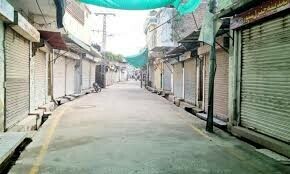FOLLOWING the outbreak of the HIV infection in Sindh — which has grabbed national headlines in recent months — it seems that Punjab too has to contend with a new spate of HIV/AIDS cases in five of its districts. According to a recent report, there are over 2,800 patients registered with the Punjab AIDS Control Programme for free medicine; they hail from Faisalabad, Chiniot, Sahiwal, Jhang and Nankana districts. Reportedly, most of them only came to know of their illness through screenings during blood donations, foreign travel or while undergoing surgery. Not surprisingly, the recent rise of the deadly disease is thought to be caused largely by medical malpractice at hospitals, the rampant use of unsterilised equipment by doctors and dentists, the reuse of syringes, which is exacerbated by a thriving quackery racket in the absence of satisfactory government healthcare. Law enforcement has not been able or willing to put an end to the presence of unlicensed ‘medical’ practitioners in private clinics across the province. In 2018, a village in Sargodha came under the spotlight — briefly, before the news moved on to other topics — for a sudden HIV/AIDS outbreak. Even this was blamed on a quack reusing syringes on the unsuspecting population. Between 2008 and 2018, approximately 869 people were diagnosed with HIV/AIDS in four districts of Sargodha. More recently, blood screenings of prison inmates in Faisalabad and Sargodha found 50 prisoners infected with HIV/AIDS, along with a host of other blood-borne illnesses. Other reasons for its spread include unsafe blood transfusions, the use of contaminated razor blades and a lack of public awareness of safe sexual practices. Additionally, stigma surrounding the disease makes it extremely difficult for HIV/AIDS patients to receive the medical care and compassion they deserve.
According to the National Health Services in its report to the Supreme Court last year, there are approximately 150,000 people suffering from HIV/AIDS in the country: 75,000 people in Punjab; 60,000 in Sindh; and 15,000 in Khyber Pakhtunkhwa and Balochistan. Despite the sudden high rise in figures in recent months, the issue has not received the attention it deserves in the national discourse and policymaking. Unfortunately, tragedies only seem to create outrage when they present opportunities for political gain. It is time for the government to declare a national emergency, and not allow the problem to fester any longer. Deep-rooted challenges will not simply disappear if we pretend they do not exist.
Published in Dawn, June 14th, 2019












































